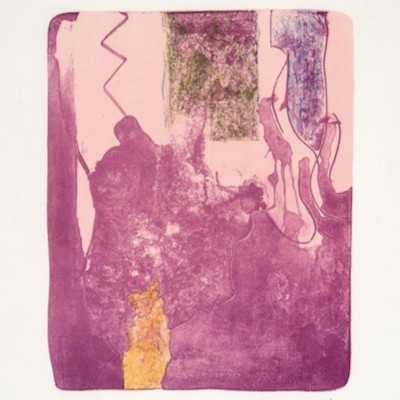
Details
Artist
Styles
EA on crème Vélin paper, signed and numbered by hand in pencil. - Reference: Weelen 49. // Helena Vieira da Silva's L’Échiquier (1961) is a captivating lithograph that exemplifies her abstract expressionist style. Printed on crème Vélin paper, this limited edition work reveals her fascination with perspective, space, and the abstract representation of cityscapes. The composition is marked by a dense, grid-like arrangement of black and white forms, creating an impression reminiscent of an urban chessboard. The interplay of light and shadow lends the piece a dynamic sense of depth and movement, drawing the viewer into its maze-like structure. Hand-signed and numbered, L’Échiquier is a compelling example of Vieira da Silva’s mastery in blending architecture and abstraction, and it remains an essential piece for contemporary art collectors.
L’Échiquier , 1961
form
Medium
Size
38 x 43.5 cm
- Inches
- Centimeters
Edition
Price
- USD
- EUR
- GBP
Details
Artist
Styles
EA on crème Vélin paper, signed and numbered by hand in pencil. - Reference: Weelen 49. // Helena Vieira da Silva's L’Échiquier (1961) is a captivating lithograph that exemplifies her abstract expressionist style. Printed on crème Vélin paper, this limited edition work reveals her fascination with perspective, space, and the abstract representation of cityscapes. The composition is marked by a dense, grid-like arrangement of black and white forms, creating an impression reminiscent of an urban chessboard. The interplay of light and shadow lends the piece a dynamic sense of depth and movement, drawing the viewer into its maze-like structure. Hand-signed and numbered, L’Échiquier is a compelling example of Vieira da Silva’s mastery in blending architecture and abstraction, and it remains an essential piece for contemporary art collectors.
- Recently Added
- Price (low-high )
- Price (high-low )
- Year (low-high )
- Year (high-low )
What is abstract expressionism?
Abstract Expressionism is an art movement that emerged in the United States during the 1940s and 1950s. Characterized by large, abstract canvases, the movement emphasized spontaneous, expressive brushwork and the use of color and form to convey emotion rather than represent reality. Artists like Jackson Pollock, Mark Rothko, and Willem de Kooning are key figures in this movement. Abstract Expressionism marked a shift in the art world, making New York City a center of the international art scene.


















